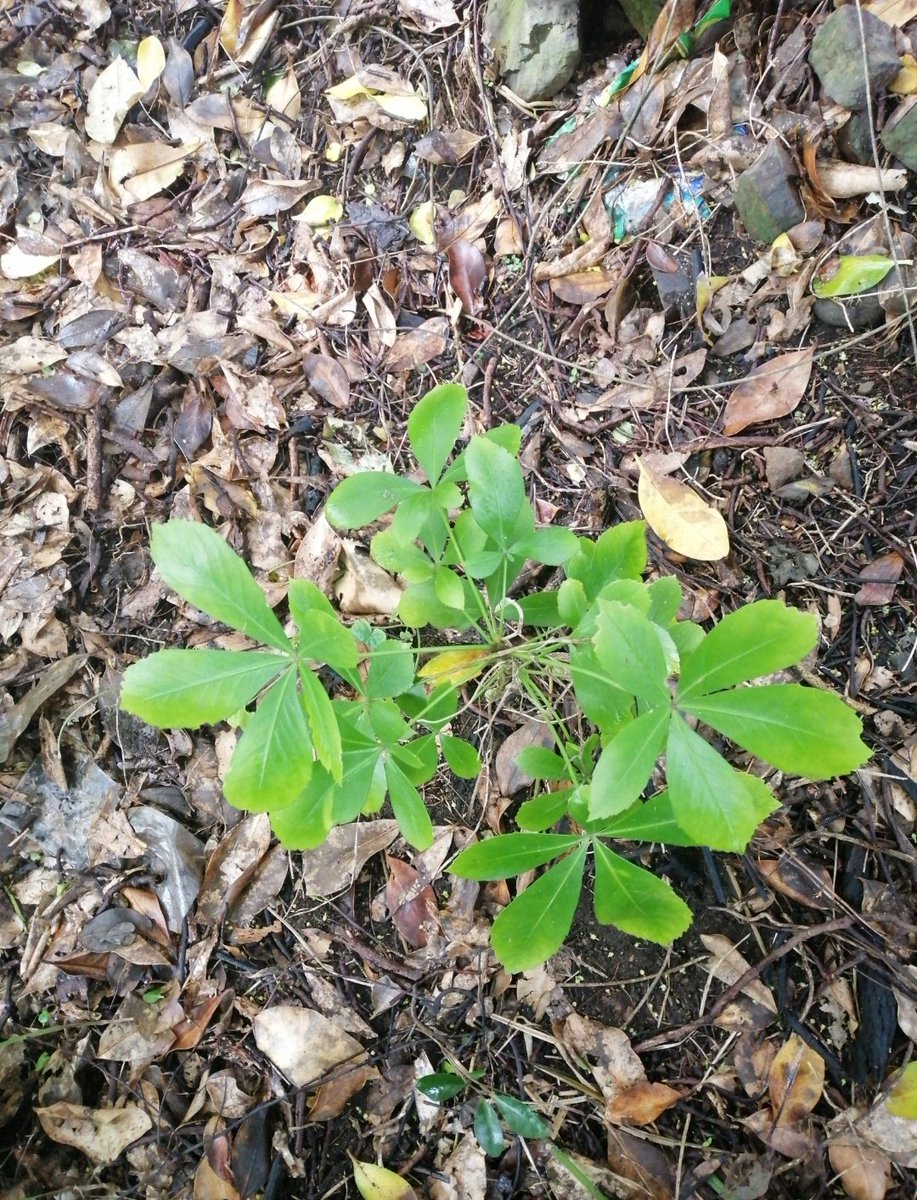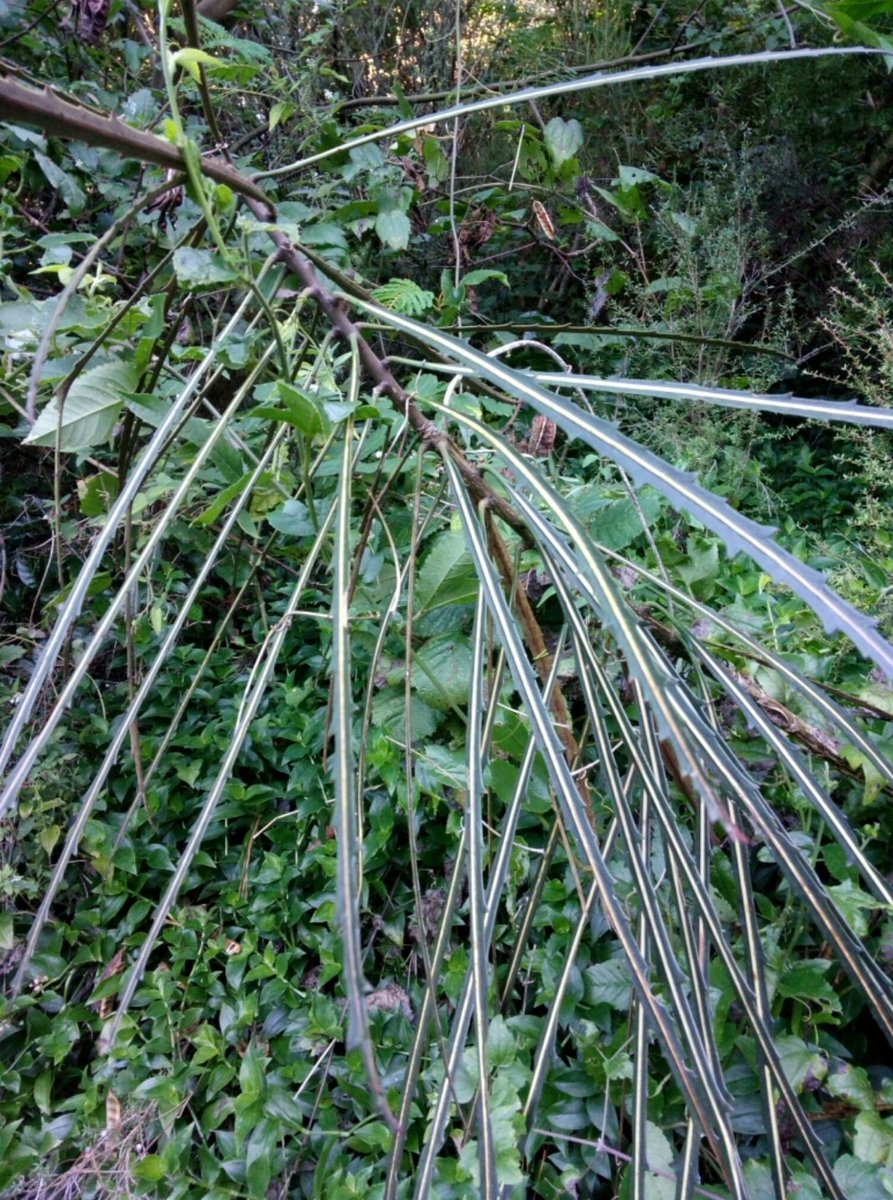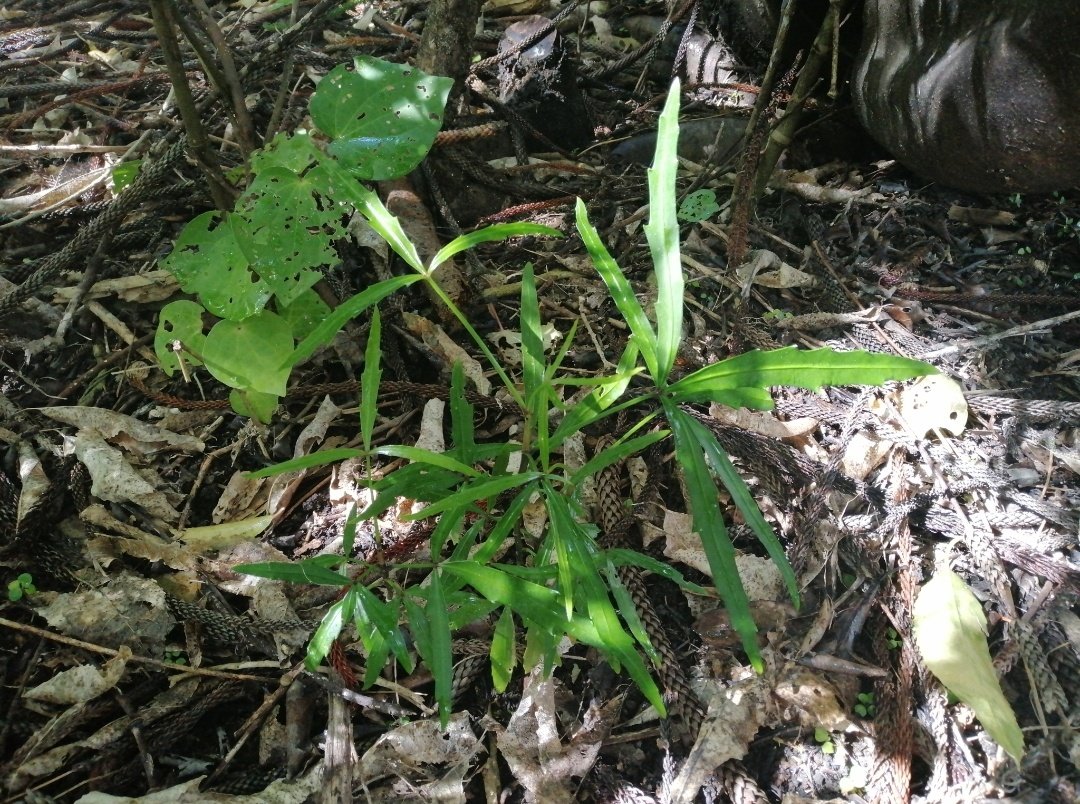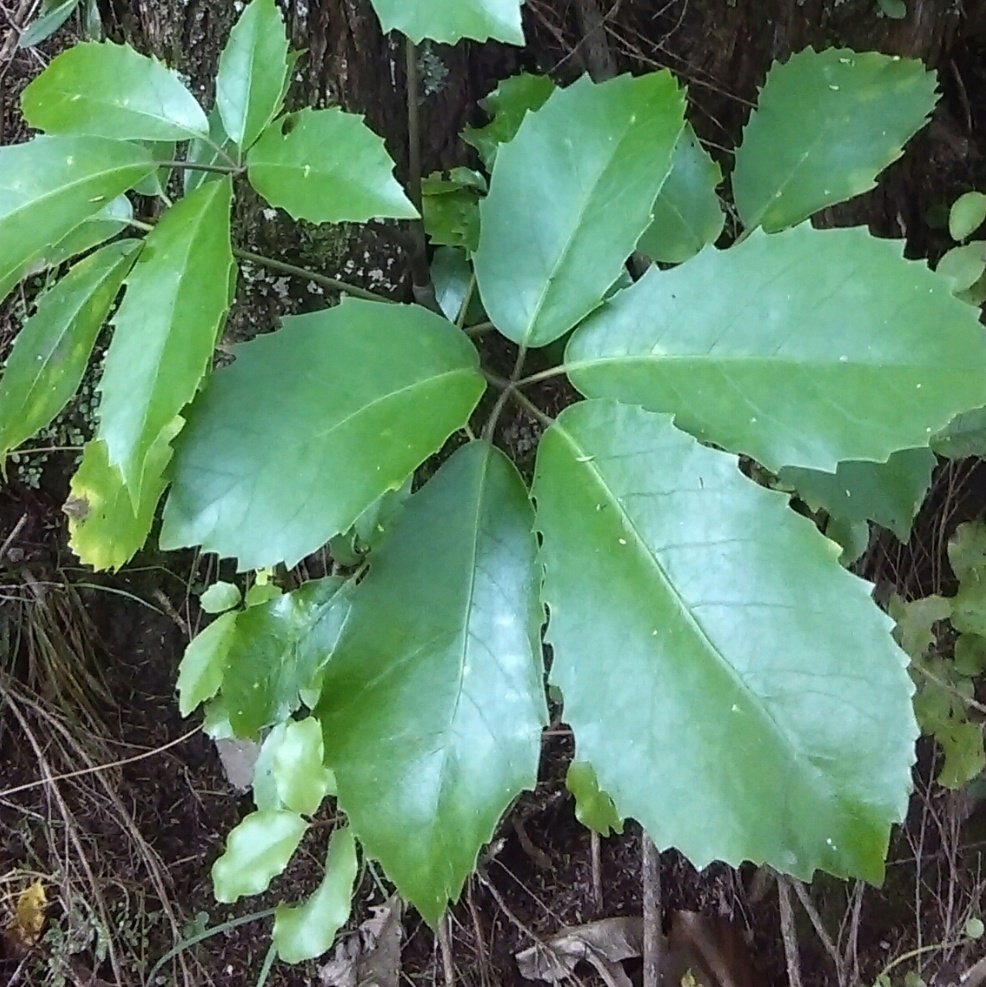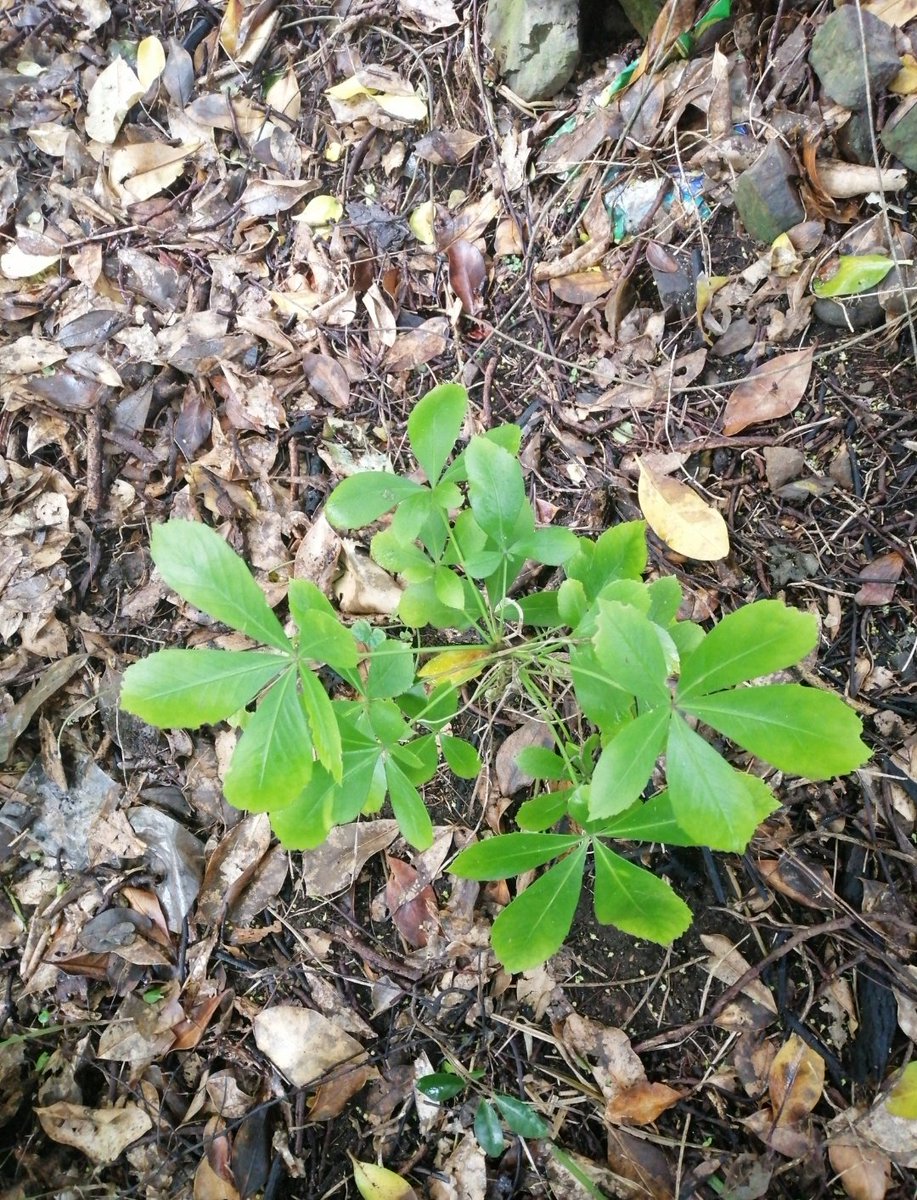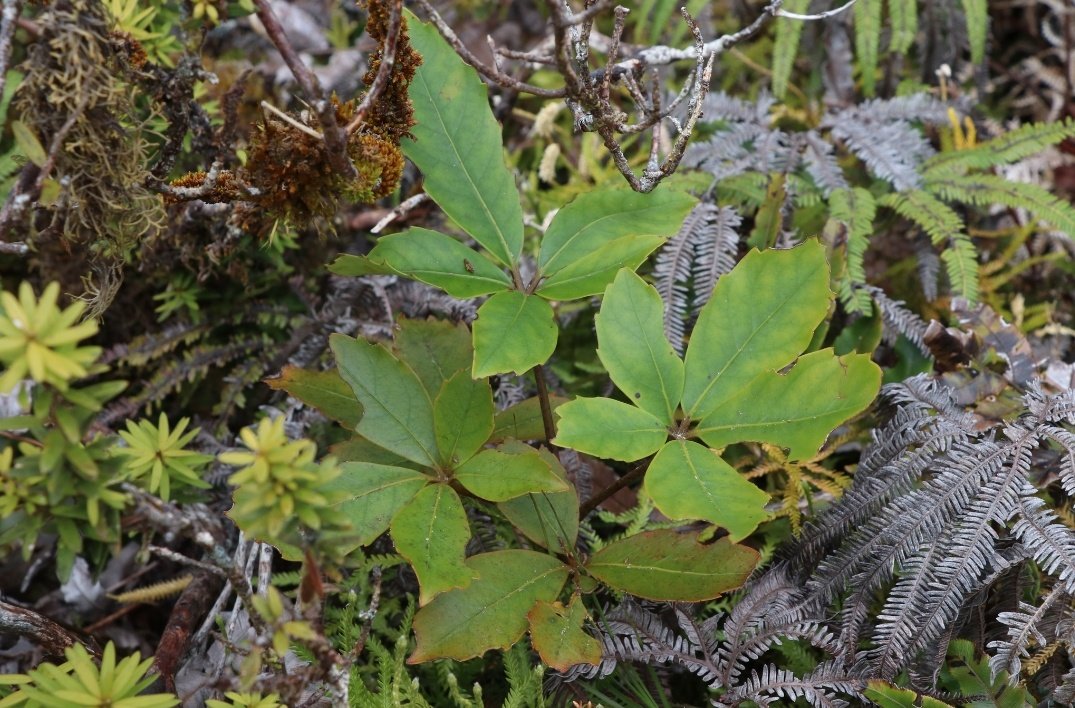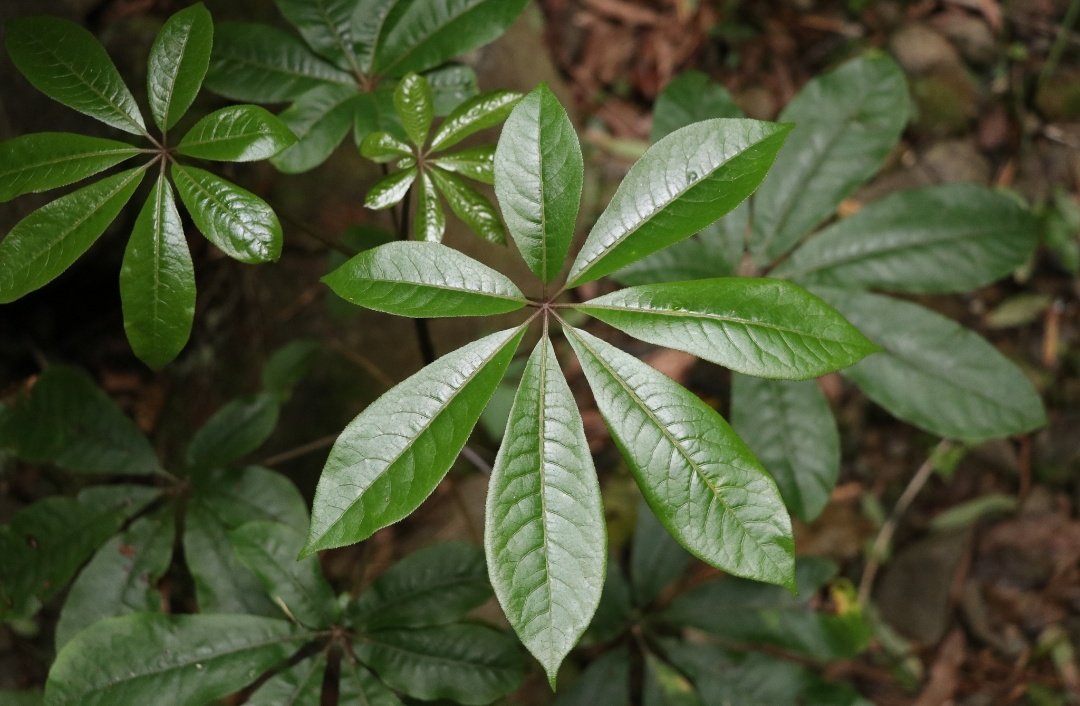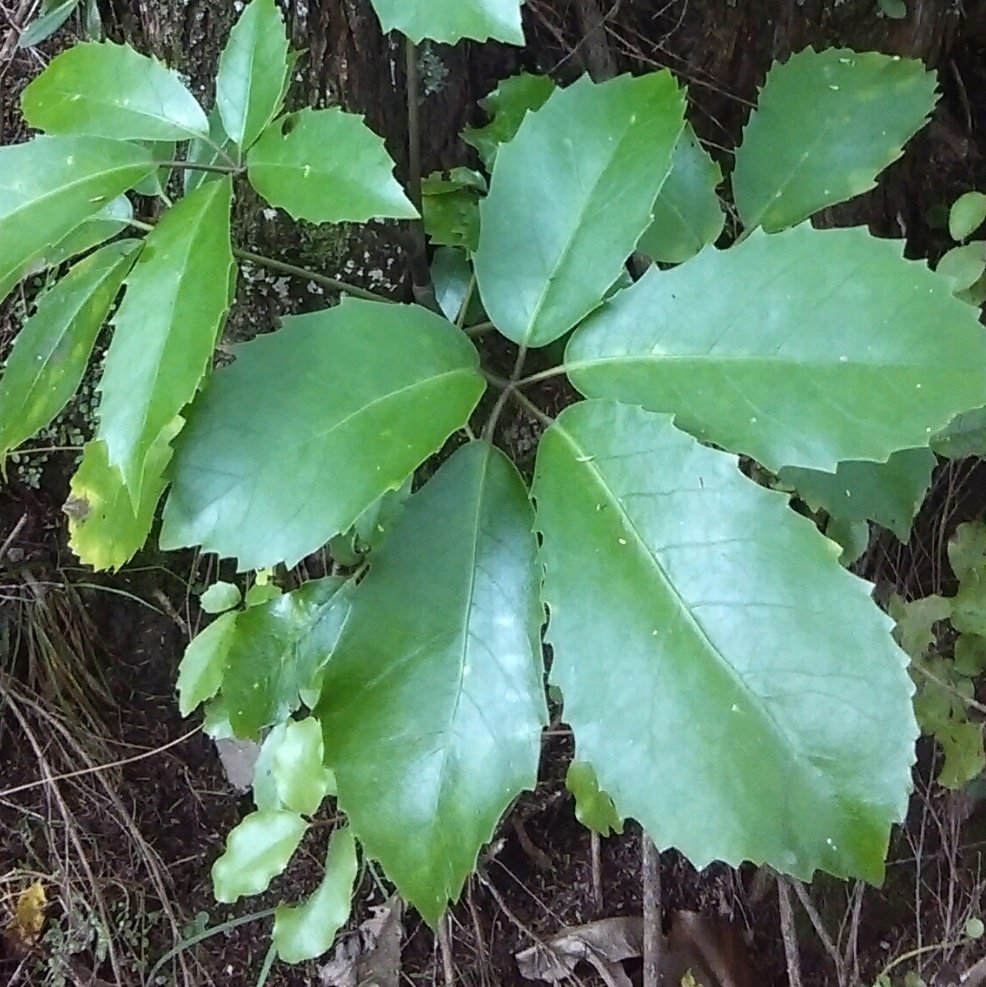Houpara/coastal five finger (Pseudopanax lessonii) isn& #39;t locally native around Kāpiti but it& #39;s fairly common.
It easily hybidises with horoeka/lancewood (Pseudopanax crassifolius) to create Pseudopanax crassifolius × lessonii
It easily hybidises with horoeka/lancewood (Pseudopanax crassifolius) to create Pseudopanax crassifolius × lessonii
Our Pseudopanax species are well known for hybridising.
Leon Perrie has a great blog on it here: https://blog.tepapa.govt.nz/2009/06/10/our-promiscuous-pseudopanax-plants/">https://blog.tepapa.govt.nz/2009/06/1...
Leon Perrie has a great blog on it here: https://blog.tepapa.govt.nz/2009/06/10/our-promiscuous-pseudopanax-plants/">https://blog.tepapa.govt.nz/2009/06/1...
The easiest way to tell whauwhaupaku/five finger (Pseudopanax arboreus) and houpara/coastal five finger (Pseudopanax lessonii) apart are by how houpara& #39;s leaflets join in the middle, while whauwhaupaku leaflets are on stalks.
The is also a mountain five finger (Pseudopanax colensoi). It doesn& #39;t appear to have a Māori name that I can find.
It is found in low alpine forest and scrub. It has thicker leaves and shorter leaflet stalks than whauwhaupaku.
It is found in low alpine forest and scrub. It has thicker leaves and shorter leaflet stalks than whauwhaupaku.

 Read on Twitter
Read on Twitter